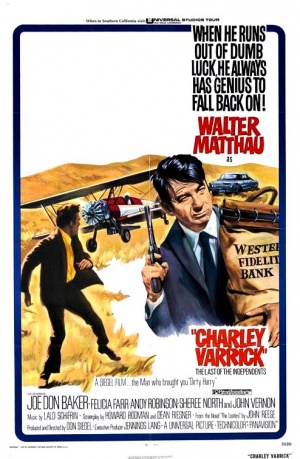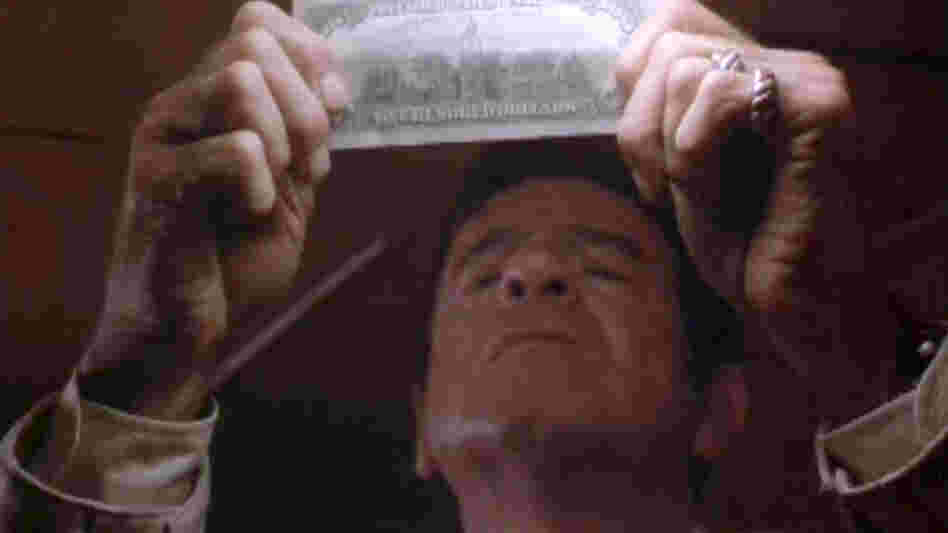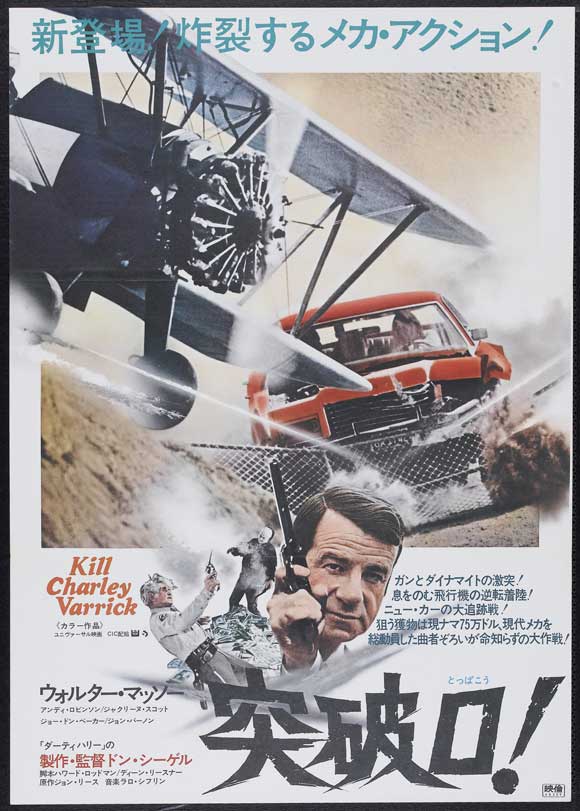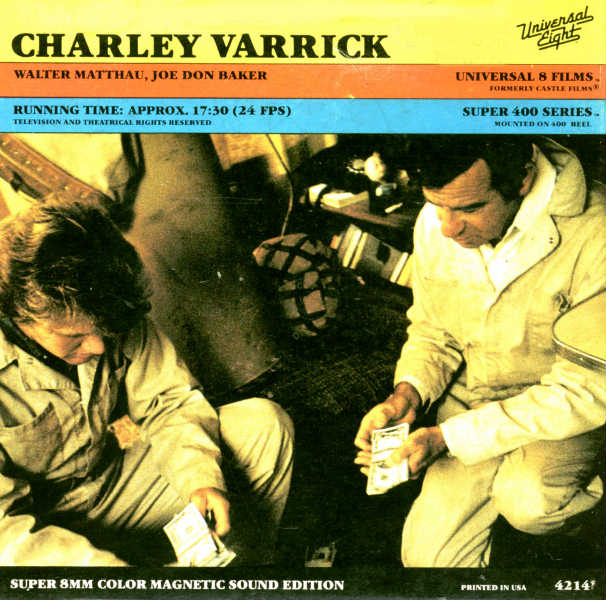Oh, Canada. . . From our neighbors up north comes The Silent Partner (1978), another underseen and underappreciated gem that features a solid cast and an intellectually thrilling precision-like plot.
Elliot Gould stars as common bank teller Miles Cullen who works in one of those banks located in a huge shopping center. It's Christmastime and there are people everywhere, and Miles notices that one of the mall Santas has been acting strangely, which leads him to suspect that he is casing the joint. Figuring that this fake Santa is going to rob the bank, Miles sets it up so that he himself ends up with the money and Santa gets away with barely anything and all the blame. The robber, Harry Reikle (an icy Christopher Plummer), doesn't appreciated being played for a fool, so he comes after Miles in what becomes a tense cat and mouse game of wits and oneupmanship.
Featuring some crafty subterfuge and plenty of thrills, with bits of humor, blackmail, eroticism, and shocking violence, The Silent Partner is full of surprises, with a terrific cast and sharp storytelling that has the whole film moving like clockwork.
Elliot Gould stars as common bank teller Miles Cullen who works in one of those banks located in a huge shopping center. It's Christmastime and there are people everywhere, and Miles notices that one of the mall Santas has been acting strangely, which leads him to suspect that he is casing the joint. Figuring that this fake Santa is going to rob the bank, Miles sets it up so that he himself ends up with the money and Santa gets away with barely anything and all the blame. The robber, Harry Reikle (an icy Christopher Plummer), doesn't appreciated being played for a fool, so he comes after Miles in what becomes a tense cat and mouse game of wits and oneupmanship.
Featuring some crafty subterfuge and plenty of thrills, with bits of humor, blackmail, eroticism, and shocking violence, The Silent Partner is full of surprises, with a terrific cast and sharp storytelling that has the whole film moving like clockwork.
Miles Cullen is kind of a bland, milquetoast, boring sort of guy. He works at a bank, he's an exotic fish enthusiast, and he lives in a small apartment. Despite these nebbish qualities, Miles manages to have multiple women in his life. He has an obvious attraction to his co-worker Julie Carver (the lovely Susannah York, in a wonderfully subtle role), but that's complicated as she also happens to be his boss's mistress. The other woman in his life is Elaine (the also lovely Céline Lomez), a femme fatale who has her loyalty tested in more than one way.
Elliot Gould is great in the lead role. His intelligent charisma and humorous charms make him an odd but appealing leading man, the kind they only had back in the '70s. He brings this plain normalcy to Miles, but he's also got this slyness about him. Miles isn't a brave or crackerjack cool type that Gould plays in The Long Goodbye (1973) or California Split (1974), he's more the type of guy who acts on an opportunity, thinking he's intelligent enough to outwit his opponent, not realizing the lengths the game would take him.
A complete 180º turn from his role as Capt. Von Trapp in The Sound of Music (1965), Christopher Plummer is a fearsome individual, in what is one of his most vicious roles, as the psychotic Harry Reikle. He's fiercely determined and has the most menacing eyes; when they appear at Gould's mail slot, it's the most effectively creepy moment in the film. Plummer glares from behind his Santa Claus suit in the opening robbery, but later in the film he has an even more shocking disguise, although I'm not going to ruin that surprise for anybody. The first time I watched this, it totally caught me off guard. It's a pretty good disguise, that's all I say. (He does make one mean looking Santa).
The Silent Partner was made during the "tax shelter era" of Canadian film production, which as far as I can tell only lasted a few years and allowed investors to deduct their entire investments from their taxable income and defer their taxes, or something like that. Most of the films made under this provision were quick productions designed to be commercial projects that disguised their "Canadianness," usually by casting American actors and hiding landmarks and other local indicators. While The Silent Partner does use American and British actors, it doesn't make much of an attempt to hide its Canadianness, something that sets it apart from other films of the period.
The city of Toronto is given a nice showcase in The Silent Partner. Part of the film is set in Eaton Centre, a popular shopping mall, and Canadian flags can be seen flying around the cityscape. Even if you don't pick up on landmarks like the CN Tower (I didn't), the first shot of money at the bank is a dead giveaway that this isn't America. It looks like Monopoly money or something.......
The city of Toronto is given a nice showcase in The Silent Partner. Part of the film is set in Eaton Centre, a popular shopping mall, and Canadian flags can be seen flying around the cityscape. Even if you don't pick up on landmarks like the CN Tower (I didn't), the first shot of money at the bank is a dead giveaway that this isn't America. It looks like Monopoly money or something.......
Director Daryl Duke was mainly a TV guy, but in addition to this nifty little thriller, he also directed the well regarded Rip Torn country-western vehicle Payday (1973). I think I'm going to have to check that one out.
Writer Curtis Hanson would follow up this tight and taunt script with a writing gig on Samuel Fuller's controversial White Dog (1982) and would go on to direct L.A. Confidential (1997, for which he won a screenplay Oscar), Wonder Boys (2000), and 8 Mile (2003). The Silent Partner is based on a book by Anders Bodelsen entitled 'Think of a Number' and is a remake of an obscure Danish film from 1969 of the same name, starring Bibi Andersson.
The cinematography isn't flashy but is effective in setting the tone at different locations. There's some moody, noir-ish lighting in Miles' apartment and in the streets below his window. The one big shocking scene of violence is orchestrated like an Italian horror film, almost operatic in its nature and execution. The music was provided by Oscar Peterson, a great Canadian jazz musician and composer, considered to be one of the greatest jazz pianists. The score is unobtrusive and accentuates the tension by using moody orchestrics, mainly strings and horns, with the percussion saved for the chase and getaway scenes.
The cinematography isn't flashy but is effective in setting the tone at different locations. There's some moody, noir-ish lighting in Miles' apartment and in the streets below his window. The one big shocking scene of violence is orchestrated like an Italian horror film, almost operatic in its nature and execution. The music was provided by Oscar Peterson, a great Canadian jazz musician and composer, considered to be one of the greatest jazz pianists. The score is unobtrusive and accentuates the tension by using moody orchestrics, mainly strings and horns, with the percussion saved for the chase and getaway scenes.
Look for John Candy in a small supporting role, who gets a couple funny lines but mostly his suits are just funny.
Celebrating its 35th year of release, The Silent Partner is a really great crime thriller, with well-defined characters and some nice understated performances, this is one of those rare gems that more people need to see. Seek it out.
I first saw it on DVD at the recommendation of a friend awhile back, but earlier this year I saw a 35mm print of The Silent Partner at The Hollywood Theater as part of their New Years Day Secret Movie Marathon and it was quite a treat, my favorite thing shown at that event. The Hollywood Theater also screened the film again recently as part of their Polyester Pulp: 70s Crime Series, going on this month through May 1st.
I first saw it on DVD at the recommendation of a friend awhile back, but earlier this year I saw a 35mm print of The Silent Partner at The Hollywood Theater as part of their New Years Day Secret Movie Marathon and it was quite a treat, my favorite thing shown at that event. The Hollywood Theater also screened the film again recently as part of their Polyester Pulp: 70s Crime Series, going on this month through May 1st.
This is the shitty cover to the no-frills DVD that's out there. Makes it look like a Reservoir Dogs knock-off. . . .
....and these old VHS covers down here aren't much better. The first one's okay, the second one has Gould with an apple in his mouth (?), and the third one has one of those cartoon covers that were kinda popular back in the 70s.
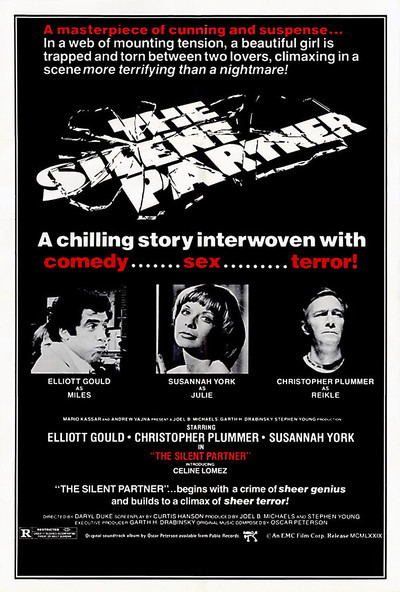














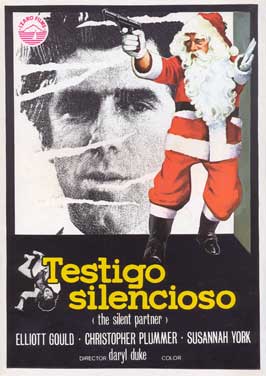

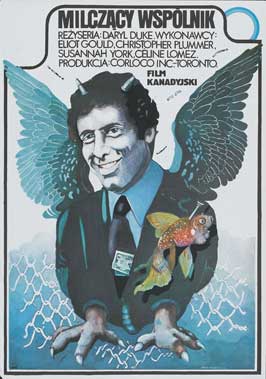
__SilentPartner(1).jpg)
